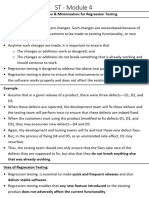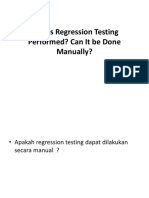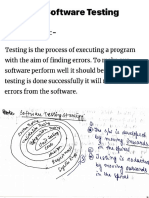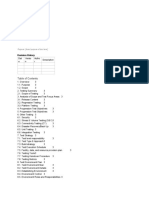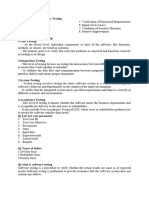0% found this document useful (0 votes)
6 views1 pageRegression Testing Notes
Microsoft Test Manager (MTM) manages the entire test lifecycle, including test planning, design, execution, and reporting. It supports bug logging and regression testing to ensure recent changes do not affect existing functionality. Key methods in regression testing include retesting all cases, selecting impacted tests, and prioritizing critical areas to balance cost, time, and quality.
Uploaded by
M HaroonFCopyright
© © All Rights Reserved
We take content rights seriously. If you suspect this is your content, claim it here.
Available Formats
Download as PDF, TXT or read online on Scribd
0% found this document useful (0 votes)
6 views1 pageRegression Testing Notes
Microsoft Test Manager (MTM) manages the entire test lifecycle, including test planning, design, execution, and reporting. It supports bug logging and regression testing to ensure recent changes do not affect existing functionality. Key methods in regression testing include retesting all cases, selecting impacted tests, and prioritizing critical areas to balance cost, time, and quality.
Uploaded by
M HaroonFCopyright
© © All Rights Reserved
We take content rights seriously. If you suspect this is your content, claim it here.
Available Formats
Download as PDF, TXT or read online on Scribd
/ 1
